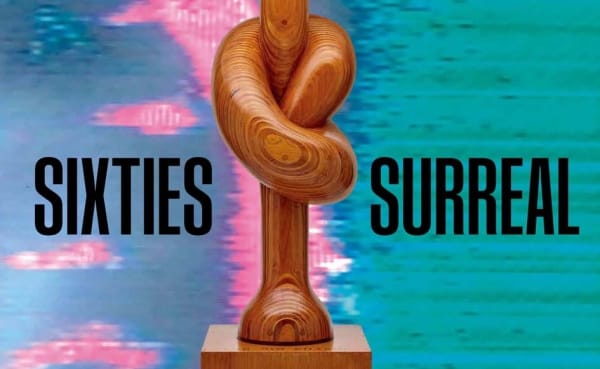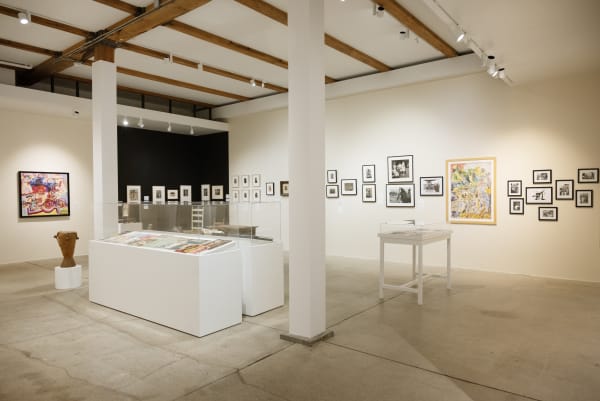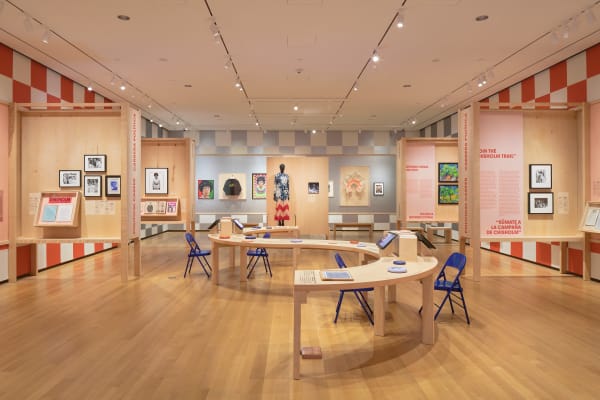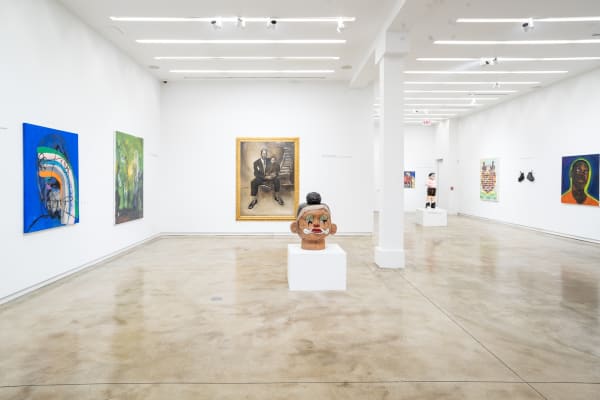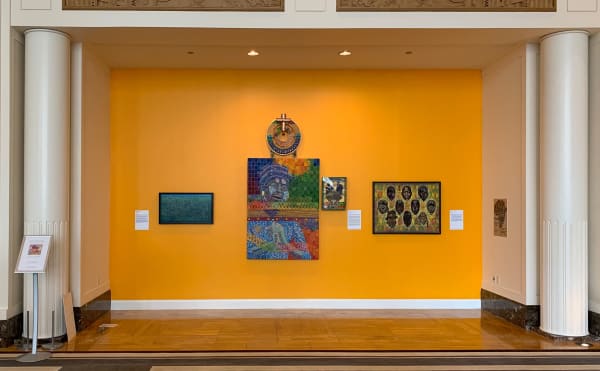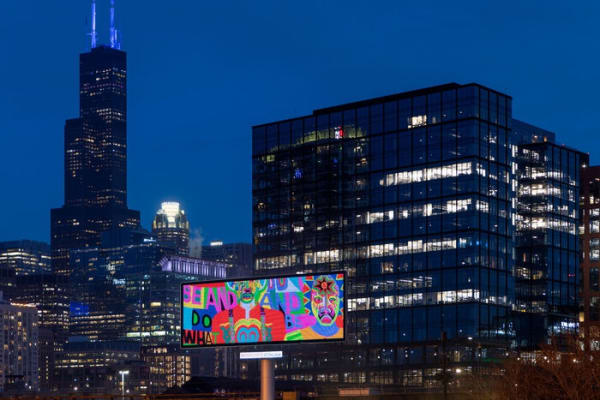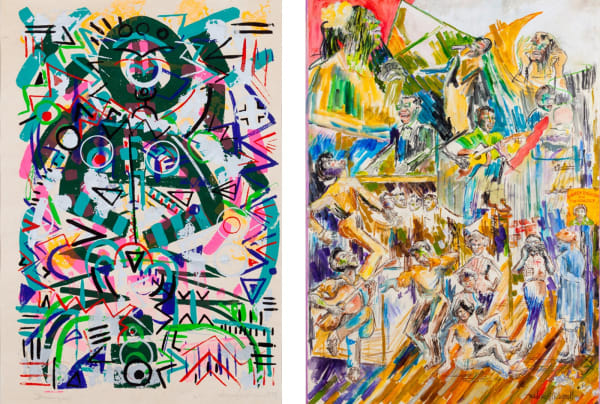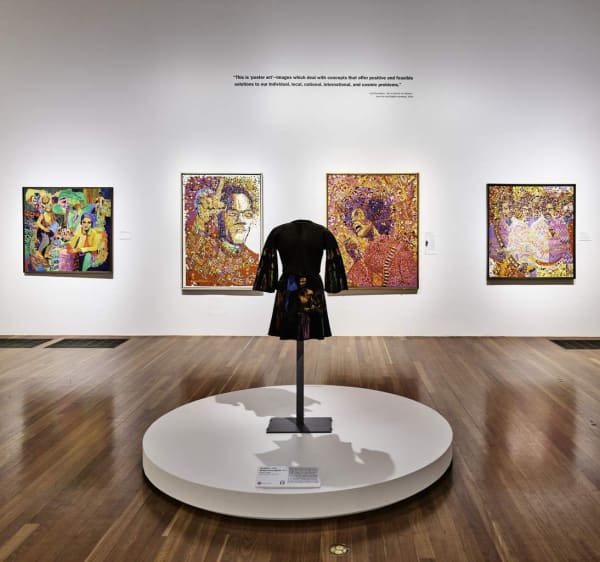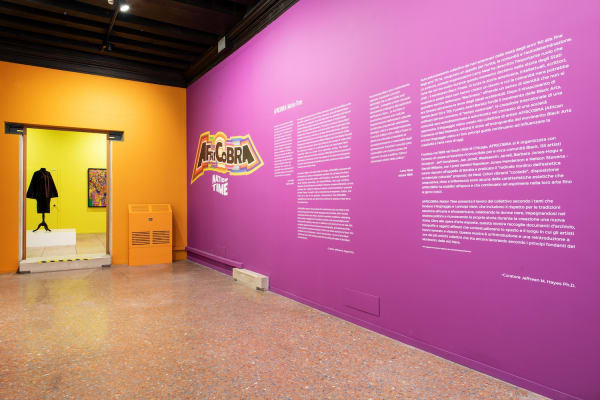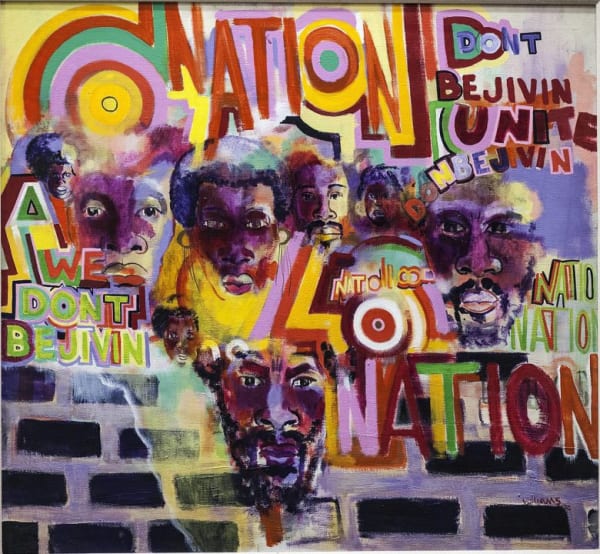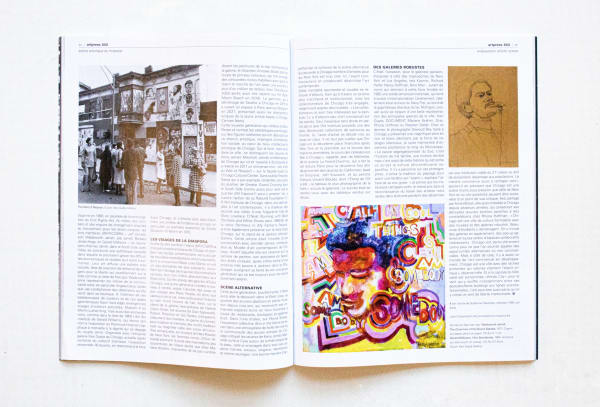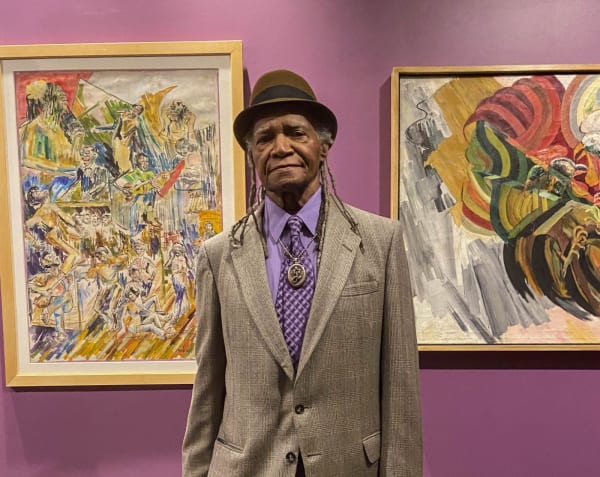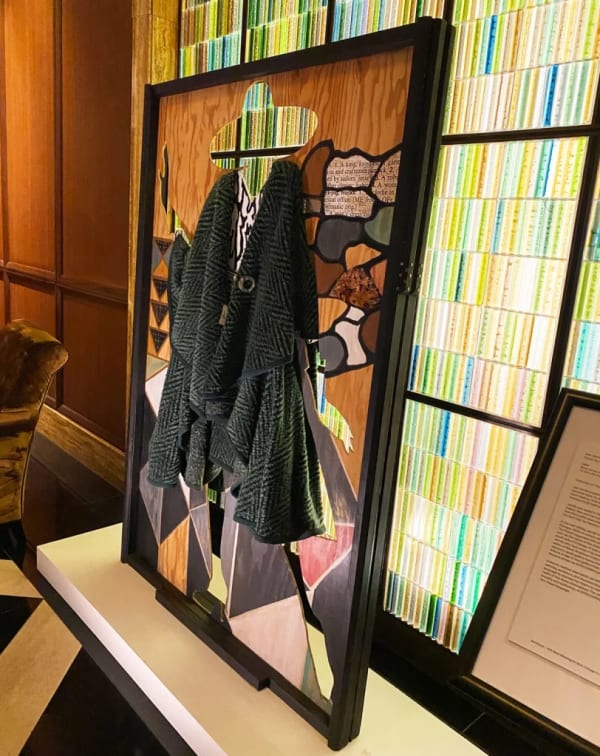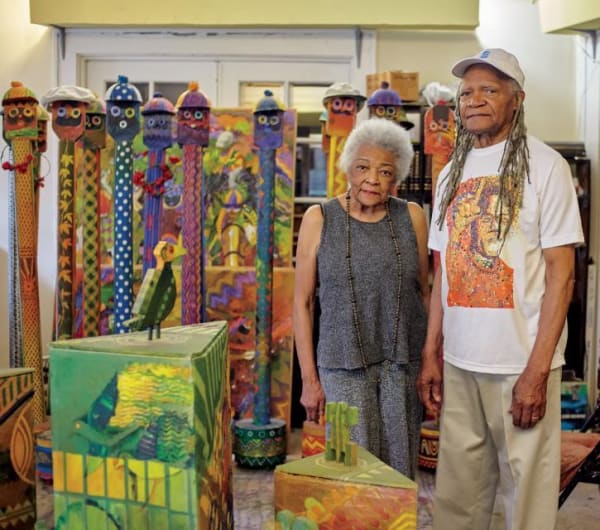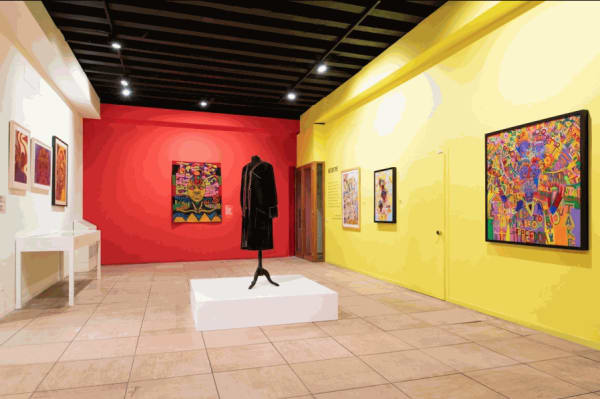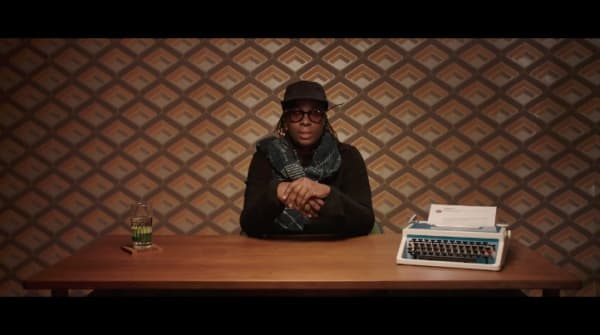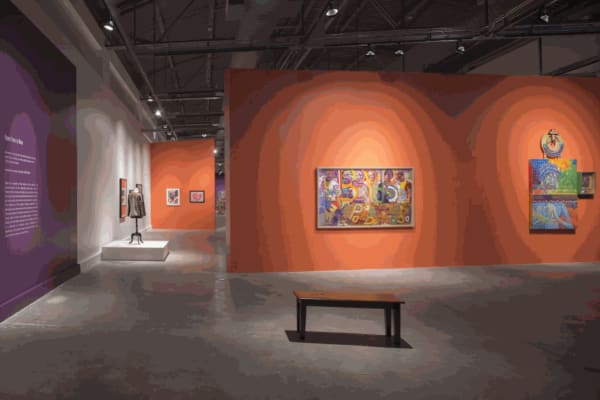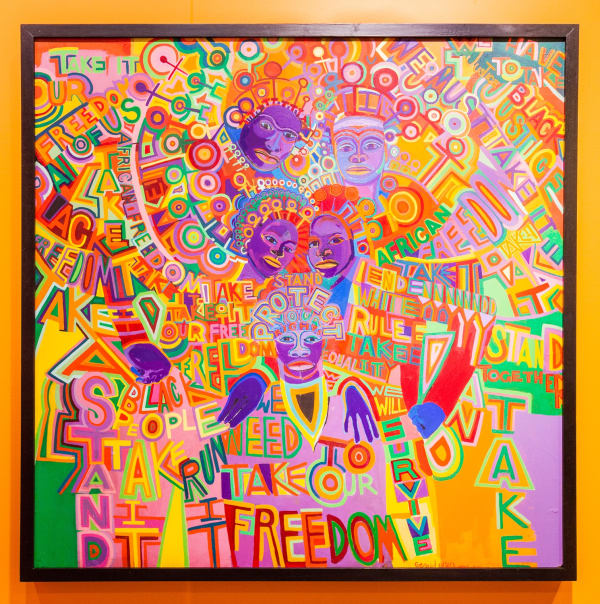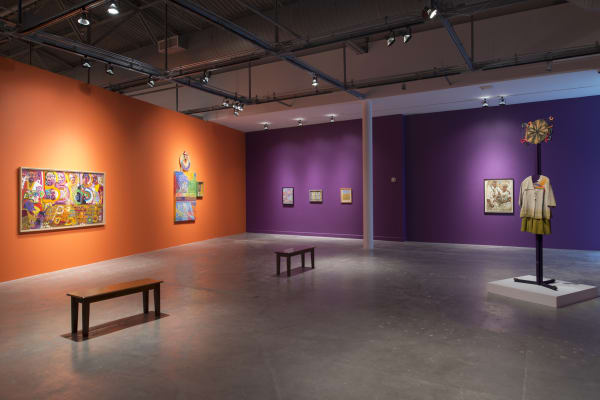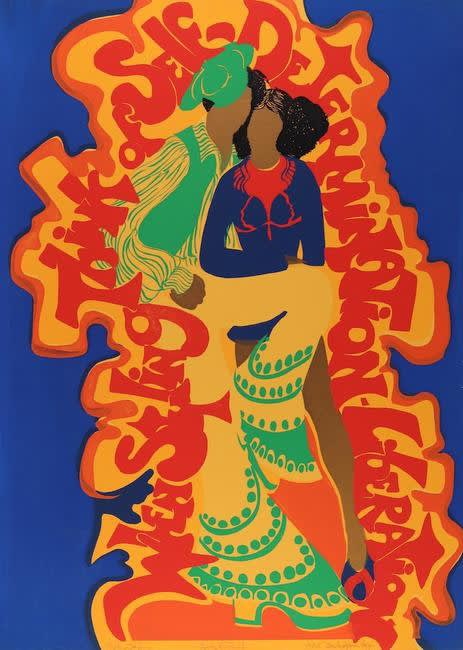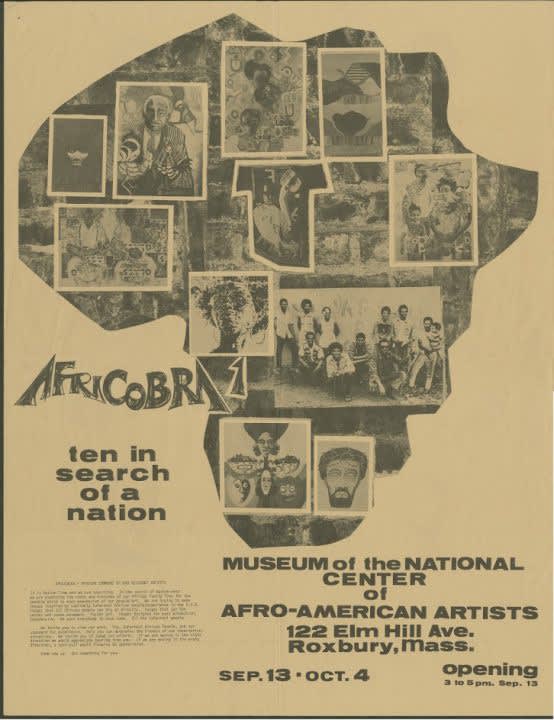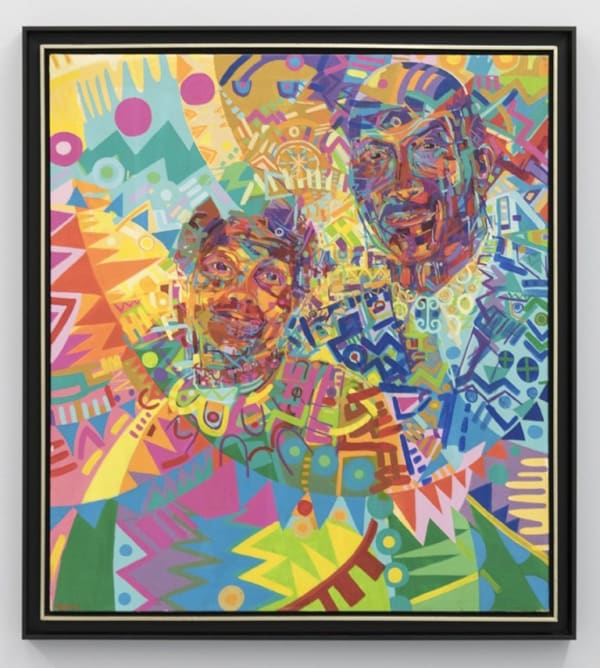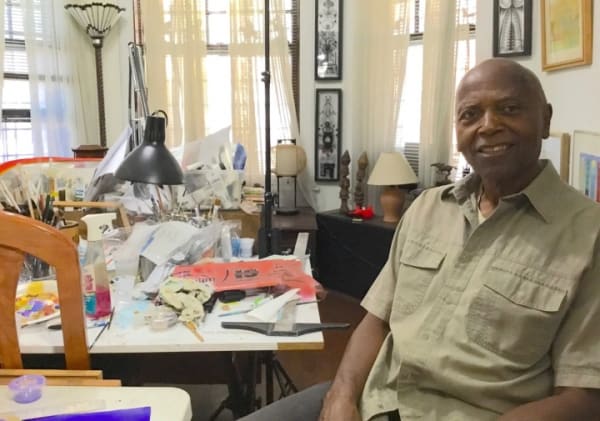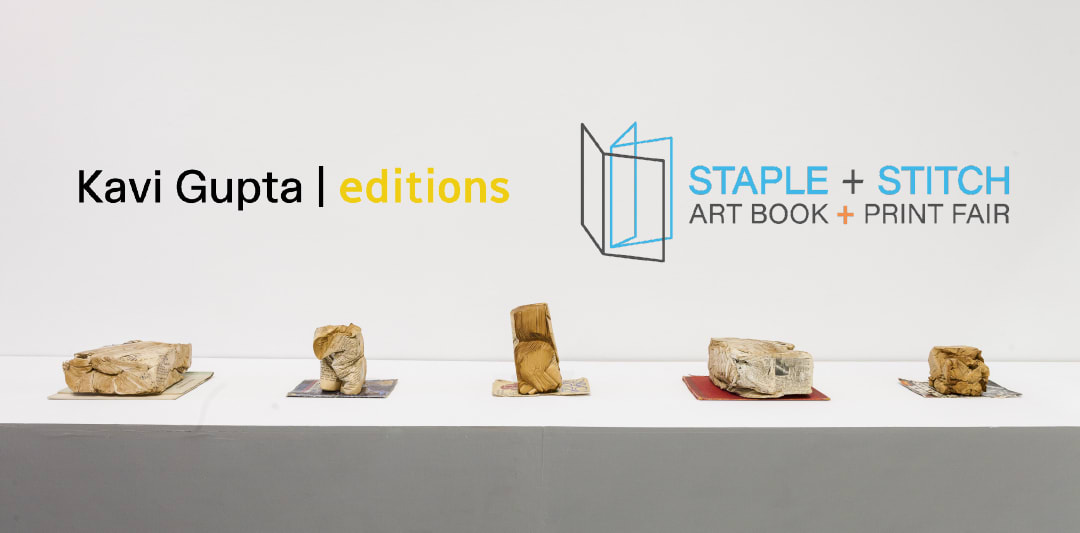AfriCOBRA USA, b. 1968
Founded in 1968, the five founding artists of AfriCOBRA sought to gain an understanding of modern, transnational black aesthetics, so they could develop an artistic style that could be immediately identified as "Black Art." The group had its genesis in the dissolution of a prior collective called the Organization of Black American Culture (OBAC), which was itself formed as a tool for using art to address social and cultural challenges affecting the African American community. OBAC gained national prominence in 1967 when it organized a group of nine artists and nine photographers to collaborate on the creation of The Wall of Respect, a monumental mural painted on the side of a business in the Bronzeville neighborhood of Chicago. According to its creators, the mural "depicted 'Black Heroes' as positive role models for identity, community formation, and revolutionary action."
Following the completion of the Wall of Respect, some of the artists involved with the project began having casual get-togethers to discuss aesthetics and contemporary black culture. Those early meetings included Jeff Donaldson, Wadsworth Jarrell, Jae Jarrell, Barbara Jones-Hogu and Gerald Williams. Also sometimes present was Robert Paige, in whose home some of the gatherings took place. Over time, other artists, Nelson Stevens, Napoleon Jones-Henderson, Carolyn Lawrence, Frank Smith, and James Phillips-joined the group.
The aesthetic position that grew out of these meetings is defined by the use of text, positive figurative images of black people, abstract patterns evoking African artistic traditions, and bright, luminescent "Kool-Aid colors."
To help disseminate their ideas, the group published a manifesto in 1969, titled "Ten in Search of a Nation," which outlined three goals they hoped their work would achieve:
1. definition-images that deal with the past
2. identification-images that relate to the present
3. direction-images that look into the future
Each AfriCOBRA artist then translated these ideas into physical form, and the group exhibited the work in a series of exhibitions that traveled the United States. The work spanned multiple mediums, including drawing, painting, sculpture, and fashion; the exhibitions attracted nationwide attention. By the time ArfiCOBRA I reached the Studio Museum in Harlem in the early 1970s, the group's aesthetic language had caught on like wildfire. During these early exhibitions, AfriCOBRA members noted that many viewers were unable to afford the art. In response, they made posters of their most popular paintings, reiterating their belief that art has to relate to everyday people if it is going to be effective as an impetus for social transformation.
Although AfriCOBRA ceased exhibiting together in the 1970s, most members continued in their art careers. Some have since passed away, but many are still active in their studios today. Barbara Jones-Hogu, Carolyn Lawrence, Jae Jarrell, Omar Lama, Sherman Beck, Wadsworth Jarrell, Napoleon Henderson, Jeff Donaldson, Gerald Williams, and Nelson Stevens.
Select exhbitions of AfriCOBRA's include, Mapping Resistance: The Legacy of Black Liberation (1925-1975); Kavi Gupta , Chicago, IL, 2025, I am Somebody, The Peninusla, Chicago, IL, 2022; The Met Breuer, NY, USA; AFRICOBRA: Nation Time, 2019 Venice Biennale Official Collateral Event, Venice, IT; AFRICOBRA: Messages to the People, MOCA North Miami, FL, USA; AFRICOBRA 50, Kavi Gupta, Chicago, USA; Soul of a Nation: Art in the Age of Black Power, Tate Modern, London, England; Crystal Bridges Museum of American Art, Fayetteville, AR; USA, Brooklyn Museum, NY, USA; The Broad Museum, Los Angeles, CA, USA; San Francisco MOMA, CA, USA, Museum of Fine Arts, Houston, TX, USA; Gerald Williams, Kavi Gupta, Chicago, USA; The Time is Now! Art Worlds of Chicago’s South Side, 1960-1980, Smart Museum of Art, Chicago, USA. A major profile of Williams appeared in Hyperallergic in 2018, based on an oral history included in the Smithsonian Archives of American Art.
-

Wadsworth Jarrell: Joyful Resistance
Peoria Riverfront Museum 21 Nov 2025 - 3 Jan 2026For the first time in the museum’s history, Joyful Resistance brings together a multidisciplinary collection of works from the pioneering Black American artists, authors and designers across the nation, spanning...Read more -

Jae Jarrell & Roger Brown: Sixties Surreal
Whitney Museum of American Art 24 Sep 2025 - 19 Jan 2026Sixties Surreal is an ambitious, scholarly reappraisal of American art from 1958 to 1972, encompassing the work of more than 100 artists. This revisionist survey looks beyond now canonical movements...Read more -

Mapping Resistance: The Legacy of Black Liberation (1925-1975)
KAVI GUPTA | WASHINGTON BLVD. FL. 1 25 Apr - 10 Oct 2025Spanning five decades featuring works by Gerald Williams, Wadsworth Jarrell, Sherman Beck, Jeff Donaldson, Omar Lama, and photographic works from the Kavi Gupta Archive by James P. Ball, James Van Der Zee, and Carl Van Vechten, this exhibition traces a lineage of artists whose practices assert the power of image-making as both cultural archive and radical form.Read more -

Sherman Beck: Changing the Face of Democracy Shirley Chisholm at 100
Museum of the City of New York 1 Mar - 20 Jul 2025To commemorate the centennial of the birth of Shirley Chisholm (1924–2005), the Museum of the City of New York and the Shirley Chisholm Project at Brooklyn College will present the...Read more -

James Little, Wadsworth Jarrell, Mickalene Thomas: Edges of Ailey
Whitney Museum of American Art 25 Sep 2024 - 9 Feb 2025Whitney Museum of American Art | Floor 5 Sept 25, 2024 – Feb 9, 2025 Edges of Ailey, opening at the Whitney Museum of American Art on September 25, is...Read more -

Skin + Masks: Decolonizing Art Beyond the Politics of Visibility curated by Vic Mensa
Kavi Gupta | Elizabeth Street 18 Jun - 29 Oct 2022Kavi Gupta | 219 N. Elizabeth St. Chicago, IL. 60607 Kavi Gupta is donating all proceeds from SKIN MASKS to SaveMoneySaveLife, Vic Mensa’s foundation SaveMoneySaveLife, a Chicago-based, philanthropic non-profit organization...Read more -

Sherman Beck
Kavi Gupta | Washington Blvd Fl. 2 4 Jun - 30 Jul 2022Kavi Gupta presents a solo retrospective of paintings by Sherman Beck, original member of the historic Black Arts collective AFRICOBRA. Following inclusions of Beck’s work in pivotal group exhibitions such...Read more -

AFRICOBRA: I Am Somebody
The Peninsula 7 Apr - 14 May 2022EXPO CHICAGO , the International Exposition of Contemporary & Modern Art, returns to Navy Pier April 7 to 10, hosting leading international exhibitors presented alongside one of the highest quality...Read more -

Family EXPO OVERRIDE
EXPO Chicago 7 - 17 Apr 2022During EXPO Chicago, Family (1976), a painting by AFRICOBRA founder Gerald Williams, was featured on OVERRIDE, an ephemeral digital exhibition installed on the Chicago City Digital Network (CDN), a series...Read more -

Wadsworth Jarrell and Gerald Williams, Works on Paper
Kavi Gupta | 219 N. Elizabeth St. 10 Jul - 11 Sep 2021Since their recent inclusion in such internationally acclaimed exhibitions as Soul of a Nation, AFRICOBRA 50 , and AFRICOBRA: Nation Time , an official collateral exhibition of the 2019 Venice...Read more -

Tell Me Your Story
Kunsthal KAde | Amersfoort, Netherlands 8 Feb - 30 Aug 2020Tell Me Your Story is an exhibition at the Kunsthal KAdE in Amersfoort, The Netherlands, organized as part of the museum's 2020 trilogy on the United States. It includes Kavi Gupta artists Devan Shimoyama, Gerald Williams, and Wadsworth Jarrell.Read more -

Soul of A Nation: Art in the Age of Black Power
de Young Museum | San Francisco, CA 9 Nov 2019 - 15 Mar 2020Kavi Gupta congratulates gallery artists Jae Jarrell, Wadsworth Jarrell, and Gerald Williams on their participation in Soul of a Nation: Art in the Age of Black Power, which opens at the de Young Museum, San Francisco, after traveling from the the Broad Museum, the Brooklyn Museum, London’s Tate Modern, and Crystal Bridges in Bentonville, AR.Read more -

Wadsworth Jarrell, Come Saturday Punch
Kavi Gupta | 219 N. Elizabeth St. Chicago, IL, 60607 13 Jul - 3 Aug 2019Kavi Gupta is proud to present Come Saturday Punch, a career survey of the art of Wadsworth Jarrell (b. 1929, USA).Read more -

AFRICOBRA NATION TIME
Venice Biennale 2019 | La Biennale di Venezia 2019 in Venice, Italy. 11 May - 24 Nov 2019Kavi Gupta is honored to sponsor AFRICOBRA: Nation Time as an official Collateral Event of La Biennale di Venezia 2019 (May 11th – November 24th 2019), in Venice, Italy.Read more -

Idea Sale
Kavi Gupta | 219 N. Elizabeth St. Chicago, IL, 60607 13 Apr - 1 Jun 2019Kavi Gupta is pleased to present Idea Sale, a group exhibition of original works by Glenn Kaino, Jae Jarrell, Wadsworth Jarrell, Manish Nai, Scott Reeder, Tony Tasset, José Lerma, Jessica Stockholder, and Angel Otero.Read more -

AFRICOBRA: Messages to the People
Museum of Contemporary Art North Miami | Miami, FL 27 Nov 2018 - 24 Mar 2019MOCA presents a groundbreaking exhibition celebrating the founding of AFRICOBRA – the Black artist collective that helped define the visual aesthetic of the Black Arts Movement of the 1960s and 1970s. This year marks the 50th anniversary of the collective, which came out of Chicago.Read more
November 27, 2018 – March 24, 2019 -

AFRICOBRA 50
Kavi Gupta | 219 N. Elizabeth St. Chicago, IL, 60607 29 Sep - 27 Oct 2018Kavi Gupta is pleased to present AFRICOBRA 50, a landmark exhibition of original works by the five founding members of AFRICOBRA—Gerald Williams, Wadsworth Jarrell, Jae Jarrell, Jeff Donaldson, and Barbara Jones-Hogu—as well as a select group of peers who influenced or were influenced by AFRICOBRA, including Basil Kincaid, Carolyn Lawrence, Bernard Williams, Sherman Beck, Shahar Caren Weaver, Robert Paige, and James Phillips.Read more -

Soul of a Nation: Art in the Age of Black Power
Brooklyn Museum | NY 14 Sep 2018 - 3 Feb 2019Soul of a Nation: Art in the Age of Black Power shines light on a broad spectrum of Black artistic practice from 1963 to 1983, one of the most politically, socially, and aesthetically revolutionary periods in American history. Black artists across the country worked in communities, in collectives, and individually to create a range of art responsive to the moment—including figurative and abstract painting, prints, and photography; assemblage and sculpture; and performance.Read more -

The Time Is NOW! Art Worlds of Chicago’s South Side, 1960–1980
Smart Museum of Art | Chicago, IL 13 Sep - 30 Dec 2018The Time Is Now! examines this watershed cultural moment—brimming with change and conflict—and the figures who defined it.Read more -

Heritage: Wadsworth and Jae Jarrell
Cleveland Museum of Art | Cleveland, OH 19 Nov 2017 - 25 Feb 2018Inspired by the Cleveland Museum of Art’s recent acquisition of Wadsworth Jarrell’s Heritage (1973), a painting of great significance, the exhibition Heritage: Wadsworth and Jae Jarrell examines the work and...Read more -

The Freedom Principle: Experiments in Art and Music, 1965 to Now
ICA | Philadelphia, PA 14 Sep - 19 Mar 2017The Freedom Principle: Experiments in Art and Music, 1965 to Now links the vibrant legacy of the 1960s African American avant-garde to current art and culture. It is occasioned in...Read more -

Gerald Williams, Gerald Williams
Kavi Gupta | 219 N. Elizabeth St. Chicago, IL, 60607 9 Sep - 2 Dec 2017Kavi Gupta is pleased present Gerald Williams, the first solo exhibition of the work of AFRICOBRA co-founder Gerald Williams in more than 20 years.Read more -

Soul of a Nation: Art in the Age of Black Power
Tate Modern | London, UK 12 Jul - 22 Oct 2017Gerald Williams Wadsworth Jarrell and Jae Jarrell's work will be featured in the Tate Modern’s current exhibition Soul of a Nation: Art in the Age of Black Power.Read more -

The Freedom Principle: Experiments in Art and Music
MCA | Chicago, IL 11 Jul - 22 Nov 2015The Freedom Principle: Experiments in Art and Music, 1965 to Now links the vibrant legacy of the 1960s African American avant-garde to current art and culture. It is occasioned in...Read more -

AFRICOBRA: Philosophy
Logan Center Gallery | Chicago, IL 28 Jun - 11 Aug 2013AFRICOBRA in Chicago is a linked series of exhibitions and public programs scheduled May–September 2013 focusing on the Chicago artist group AFRICOBRA (African Commune Of Bad Relevant Artists), founded in...Read more -

Africobra I: Ten in Search of a Nation
Studio Museum in Harlem, NYC 21 Jun - 30 Aug 1970AFRICOBRA – AFRICAN COMMUNE OF BAD RELEVANT ARTISTS It is Nation time and we are searching. In the spirit of Nation-ness we are examining the rootsand branches of our African...Read more
-

AFRICOBRA: The African American Pulse of Chicago
Julie Chaizemartin, artpress, October 1, 2022 -

AfriCOBRA & Mary Sibande: South African artists taking over Chicago, Bonteheuwel style
Sean O’Toole, Mail & Guardian, May 6, 2022 -

AFRICOBRA: Four Gallery Shows to See in the Windy City During Expo Chicago
Maximilíano Durón, ARTNews, April 7, 2022 -

AFRICOBRA ARTISTS HONORED AT SCHOOL OF THE ART INSTITUTE OF CHICAGO 2020 VIRTUAL COMMENCEMENT, OFFER ADVICE TO GRADUATES
Victoria L. Valentine, CultureType, May 29, 2020 -

‘AFRICOBRA: Nation Time’ at Ca’ Faccanon, Venice
ARTnews, July 3, 2019 -

‘YOUR BODY ITSELF IS ALREADY A PLACE OF POLITICS’: CONTEMPORARY ARTISTS RESPOND TO EIGHT QUESTIONS FROM AFRICOBRA COFOUN
ARTNEWS, ARTNEWS, April 1, 2019 -

STUDIO MUSEUM ACQUIRES AFRICOBRA WORKS
Joshua Bell, The Studio Museum in Harlem, January 9, 2019 -

Africobra & Jeffrey Gibson: Best of 2018 | Our Top 20 Exhibitions Across the United States (excerpt)
Hyperallergic, December 19, 2018 -

AFRICOBRA: MESSAGES TO THE PEOPLE
December 6, 2018 -

AFRICOBRA: Still the Main Attraction, Art Basel Returns to Miami Beach
Paul Laster, Galerie, December 1, 2018 -

FROM A JUDY CHICAGO RETROSPECTIVE TO A CELEBRATION OF AFRICOBRA, HERE ARE 11 SHOWS TO SEE IN MIAMI DURING ART BASEL
Caroline Goldstein, Artnet News, November 27, 2018 -

Museum of Contemporary Art North Miami Shines New Light on AFRICOBRA
Chadd Scott, Forbes, November 25, 2018 -

MOCA North Miami Celebrates the AFRICOBRA Movement, Just In Time For Art Basel
Elena Martinique, Widewalls, November 12, 2018 -

Miami's MOCA Presents Chicago-based AFRICOBRA Collective During Art Basel Miami Beach 2018
Art Fix Daily, Art Fix Daily, October 4, 2018 -

CHICAGO AND THE AGE OF BLACK POWER: AN INTERVIEW WITH AFRICOBRA FOUNDING MEMBER GERALD WILLIAMS
Vasia Rigou, New City Art, September 6, 2018 -

ART BASEL MIAMI BEACH: CHICAGO ARTIST AND AFRICOBRA CO-FOUNDER GERALD WILLIAMS DEBUTS AT KAVI GUPTA GALLERY
Victoria L. Valentine, Culture Type, December 8, 2017 -

FOR GERALD WILLIAMS, A CO-FOUNDER OF AFRICOBRA, TRANSNATIONAL BLACK AESTHETICS ARE AS RELEVANT AS EVER
Phillip Barcio, HYPERALLERGIC, November 12, 2017
-
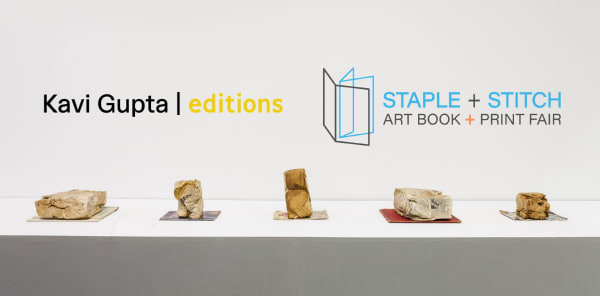
Staple + Stitch Art & Print Fair
14 - 16 Nov 2025Kavi Gupta | Editions is pleased to participate in the Staple + Stitch art book and print fair, presenting a curated selection of art publications...Read more -

Preview Night: Staple + Stitch Art & Print Fair
14 Nov 2025Preview night at Staple + Stitch art book and print fair will be held November 14th from 6-9pm. Editions | Kavi Gupta will be presenting...Read more -

Closing Celebration: Mapping Resistance: The Legacy of Black Liberation (1925-1975)
KAVI GUPTA | WASHINGTON BLVD. FL.1 10 Oct 2025Join us for the closing reception of Mapping Resistance: The Legacy of Black Liberation (1925-1975) at Kavi Gupta Washington Blvd. Fl.1. Spanning five decades featuring...Read more -

Closing Reception: Matter of Fact: Material as a Political Act
KAVI GUPTA | WASHINGTON BLVD. FL.2 10 Oct 2025Join us for the last opportunity to see Matter of Fact: Material as a Political Act. From our earliest exhibitions to the artists we continue...Read more -
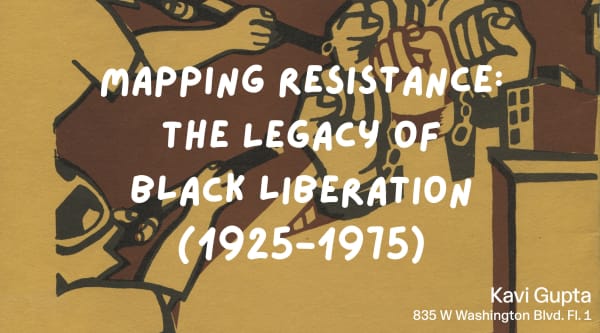
Opening Reception: Mapping Resistance: The Legacy of Black Liberation (1925-1975)
KAVI GUPTA | WASHINGTON BLVD. FL.1 25 Apr 2025Join us for the opening reception of Mapping Resistance: The Legacy of Black Liberation (1925-1975) at Kavi Gupta Washington Blvd. Fl.1 featuring director-led tours and...Read more -
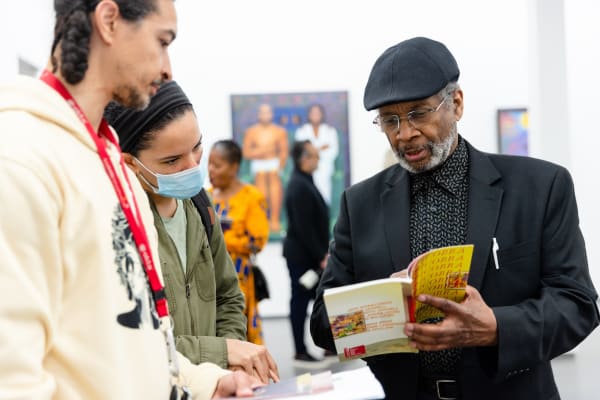
Opening Reception: Sherman Beck
4 Jun 2022Join us for a reception on Saturday, June 4, from 5-7 pm to celebrate the opening of the solo retrospective of paintings by Sherman Beck,...Read more -
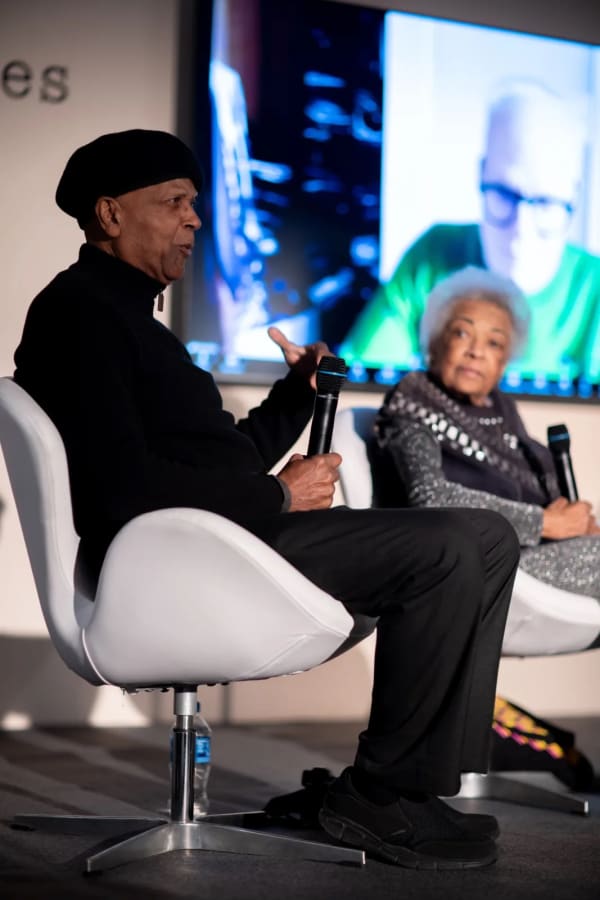
AFRICOBRA in Conversation with Hans Ulrich Obrist at EXPO Chicago
8 Apr 2022AFRICOBRA in Conversation at EXPO Chicago On Friday April 8 at 12 PM, as part of EXPO/DIALOGUES, internationally renowned Curator and Director at Serpentine Galleries,...Read more -
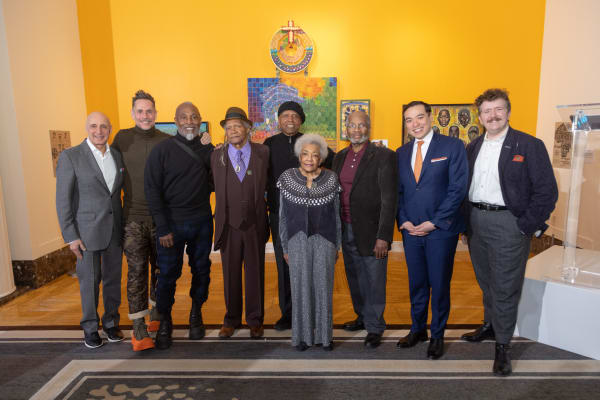
Opening Reception: Africobra, I Am Somebody
The Peninsula Hotel 8 Apr 2022On Friday, April 8, Kavi Gupta Gallery and EXPO Chicago celebrated the opening reception of I Am Somebody, featuring works by AFRICOBRA artists Sherman Beck,...Read more
-

AFRICOBRA: Art & Impact – Behind the Canvas
Dusable Museum November 3, 2024Read more -

Celebrating Black History Month: AfriCOBRA
WGN News February 20, 2024The African Commune of Bad Relevant Artists or AfriCOBRA emerged from Chicago's South Side during the turbulent period of the late 1960's. 'Our response was...Read more -

AFRICOBRA: Everything is Connected: Art and Conspiracy | Met Exhibitions
The Met November 3, 2023Read more -
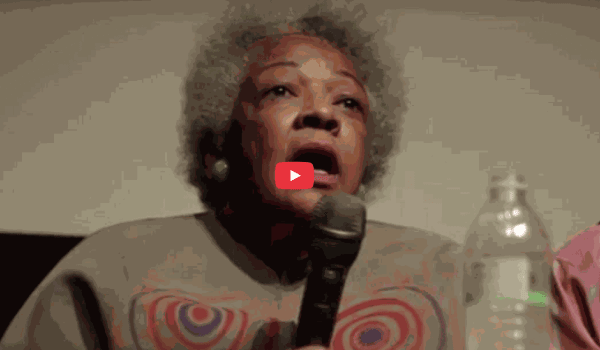
AFRICOBRA: Panel Discussion with Founding Members of AfriCOBRA
UChicago Arts November 3, 2023Read more -
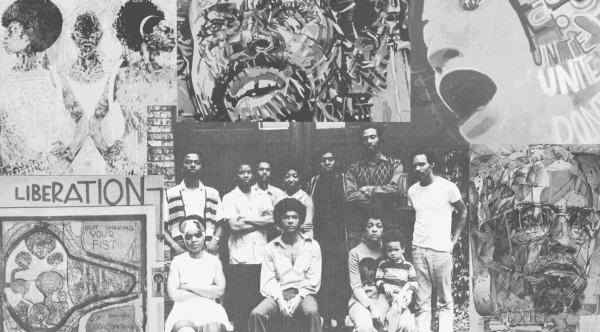
AFRICOBRA - Nation Time | Collateral Event of the 58th International Art Exhibition
La Biennale di Venezia November 1, 2023AFRICOBRA: Nation Time - Collateral Event of the 58th International Art Exhibition – La Biennale di Venezia. AFRICOBRA: Nation Time has been selected as an...Read more -
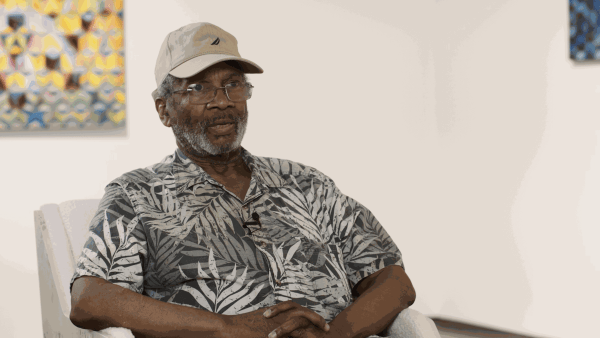
In Conversation | AFRICOBRA Members Sherman Beck & Gerald Williams
July 1, 2022In summer of 2022, Kavi Gupta gallery in Chicago opened the most ambitious solo exhibition ever of the work of AFRICOBRA member Sherman Beck. In...Read more -
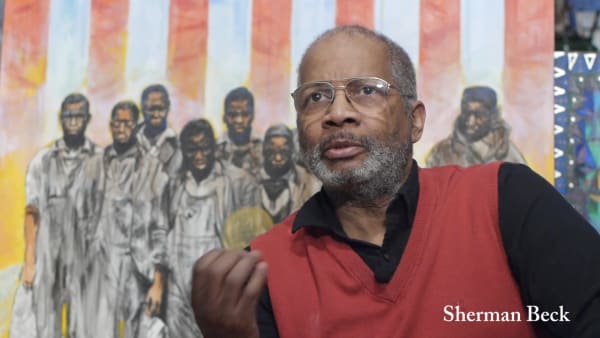
Sherman Beck | AFRICOBRA for Life
Tony Smith May 27, 2022Sherman Beck reflects on his life as an Art instructor for 22 years at Dunbar High School. He also shares his experiences as a member...Read more -
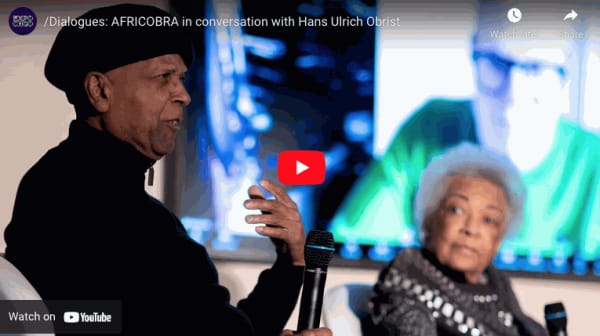
/Dialogues: AFRICOBRA in conversation with Hans Ulrich Obrist
Expo Chicago May 4, 2022Panelists | AFRICOBRA artists: Gerald Williams (SAIC 1966-67, Artist), Jae Jarrell (SAIC 1959-61, Artist), Wadsworth Jarrell (SAIC 1958, Artist), Sherman Beck (Artist), and other key...Read more -

Wadsworth Jarrell and Gerald Williams: Works on Paper, VR
July 29, 2021Read more -
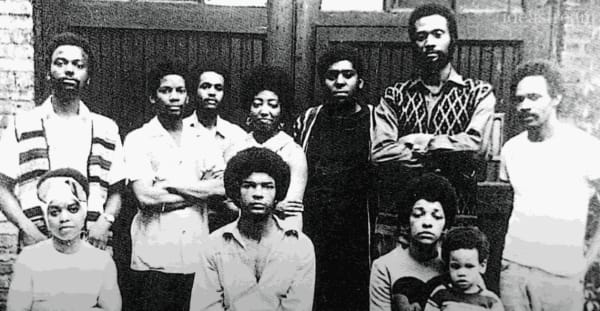
Wadsworth Jarrell's Book, "Africobra," Sets the Record Straight on Creating a Black Aesthetic
February 9, 2021Read more -
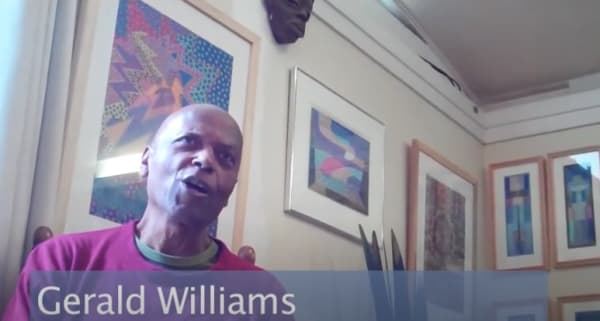
Gerald Williams of AfriCOBRA
August 8, 2020Read more -
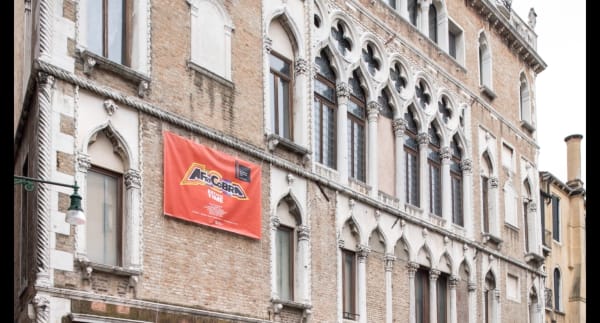
Celebrating AFRICOBRA
Kavi Gupta celebrates the one-year anniversary of AFRICOBRA: Nation Time at the Venice Biennalle May 21, 2020Kavi Gupta celebrates the one-year anniversary of AFRICOBRA: Nation Time at the Venice Biennalle, the two-year anniversary of AFRICOBRA 50 at Kavi Gupta in Chicago,...Read more -

"AFRICOBRA: Messages to the People" Artist Panel
The Museum of Contemporary Art North Miami February 15, 2019The Museum of Contemporary Art North Miami held a guided walkthrough of the exhibition with curator Jeffreen Hayes, Ph.D.. It was followed by a panel...Read more -
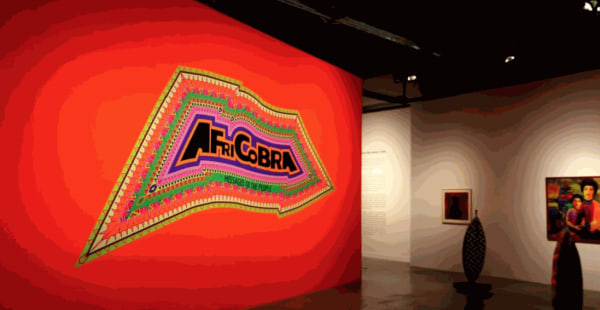
AFRICOBRA: Messages to the People, MOCA North Miami
January 11, 2019Read more -

AFRICOBRA 50 Exhibition at Kavi Gupta
October 23, 2018Read more -
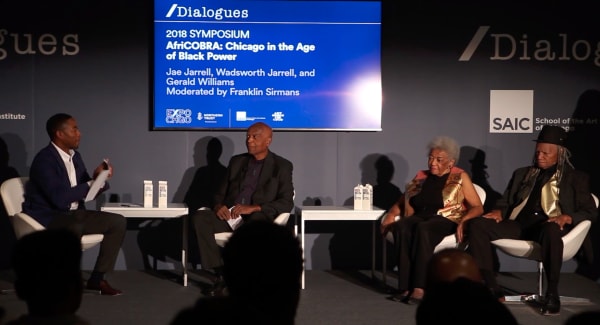
EXPO CHICAGO 2018 /Dialogues: AfriCOBRA: Chicago in the Age of Black Power
September 28, 2018Moderated by Franklin Sirmans (Pérez Art Museum Miami), this panel focused on the art of AfriCOBRA members Jae Jarrell, Wadsworth Jarrell, and Gerald Williams. Presented...Read more -
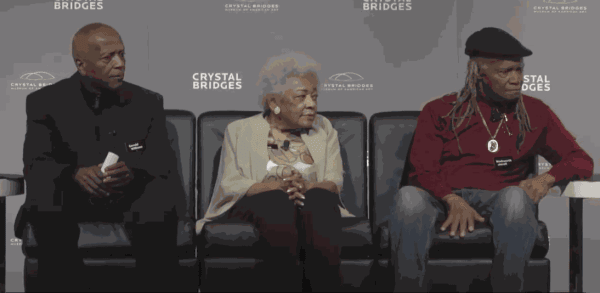
AFRICOBRA panel Discussion: Crystal Bridges Museum of American Art
March 12, 2018Read more -
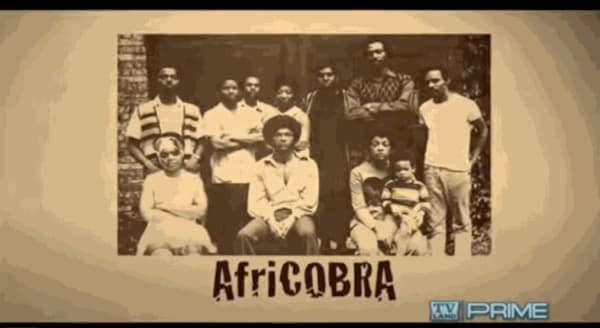
Art History Movements: AFRICOBRA | TVLAND Documentary
October 9, 2017Read more -
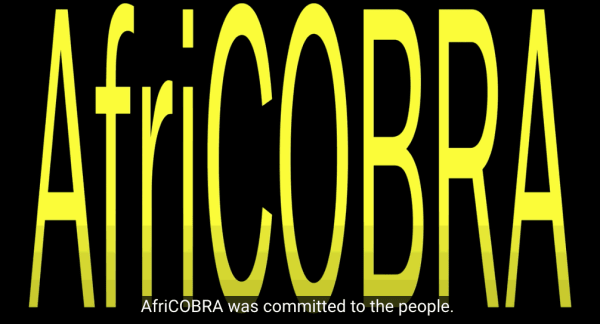
The Freedom Principle | AFRICOBRA | MCA Chicago
July 16, 2015Read more
-

INSIDE LOOK AT AFRICOBRA: NATION TIME IN VENICE
05.14.2019INSIDE LOOK AT AFRICOBRA: NATION TIME IN VENICERead more -
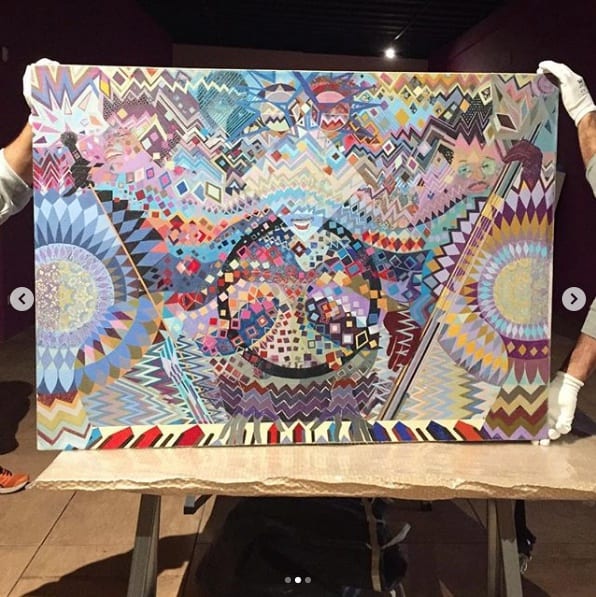
SNEAK PEEK: AFRICOBRA: NATION TIME @BIENNALEARTE2019
05.05.19Sneak peak at preparations for AFRICOBRA: Nation Time at the Venice BiennaleRead more -

AFRICOBRA IS GOING TO VENICE!
03.07.2019Africobra included in the 2019 Venice BiennaleRead more -

STUDIO MUSEUM IN HARLEM ACQUIRES AFRICOBRA WORKS
01.10.19Studio Museum buys africobra worksRead more -

AFRICOBRA AMAZES ART BASEL AUDIENCES WITH NORTH MIAMI MOCA RETROSPECTIVE
12.11.18AFRICOBRA: Messages to the People opened to enthusiastically delighted crowds during Miami Art Week. On opening night, all of the surviving co-founders of the influential Black Arts collective were on hand.Read more -
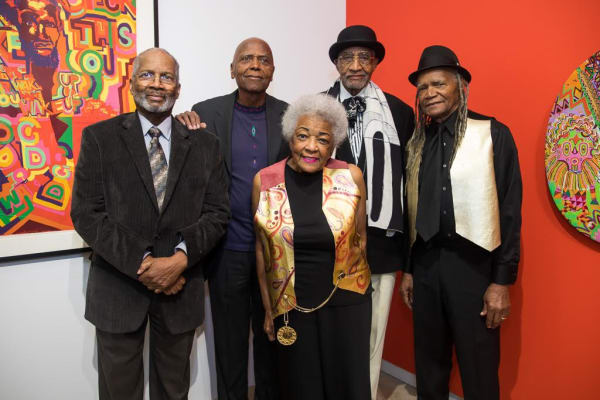
AFRICOBRA 50 OPENING
09.03.2018AFRICOBRA 50 opened last week at our Elizabeth Street location!Read more -

FIFTY YEARS OF AFRICOBRA!
09.11.18FIFTY YEARS OF AFRICOBRA! Fall 2018Read more


